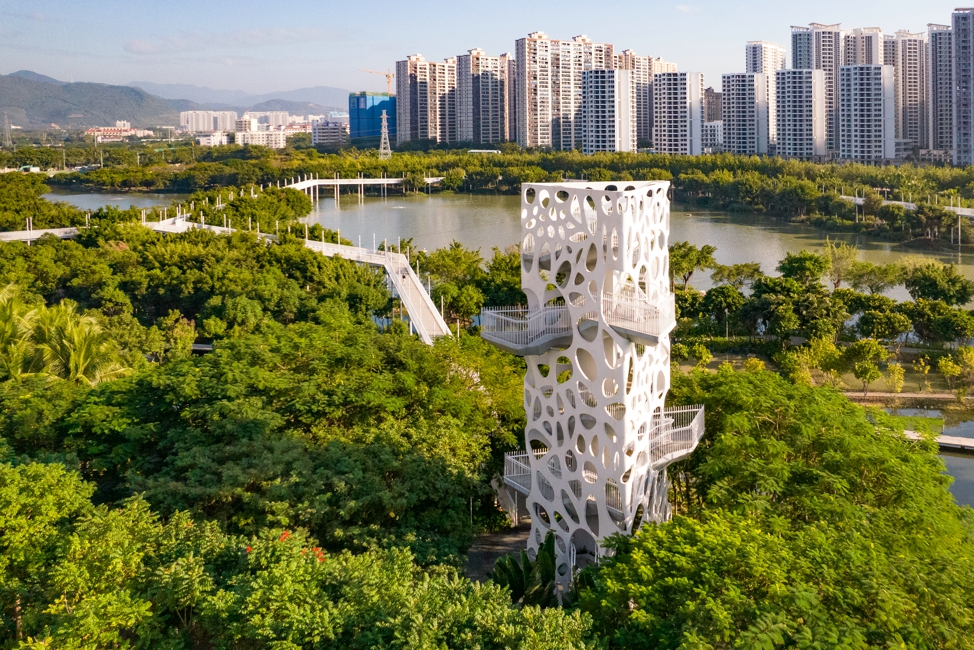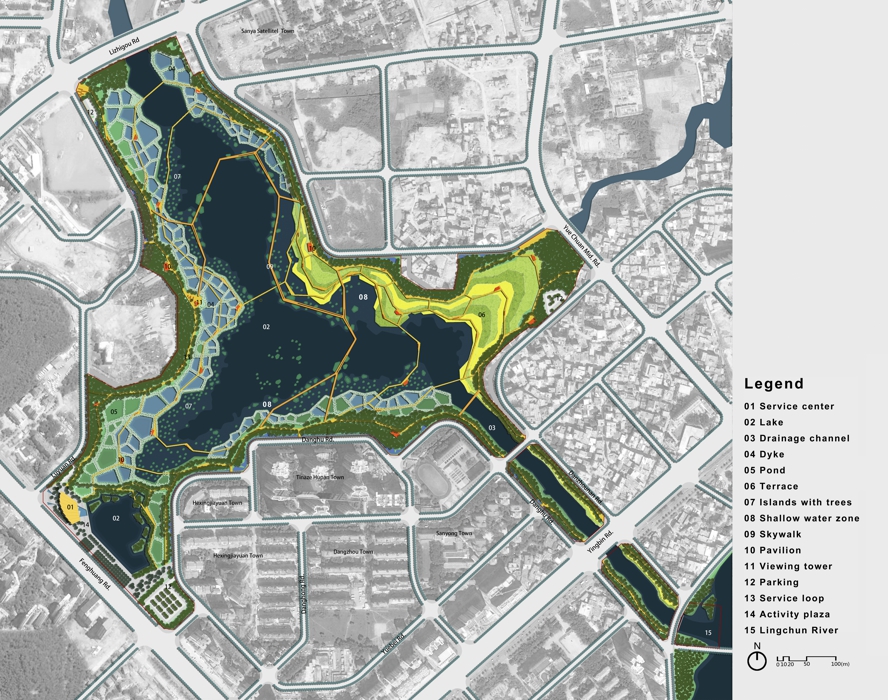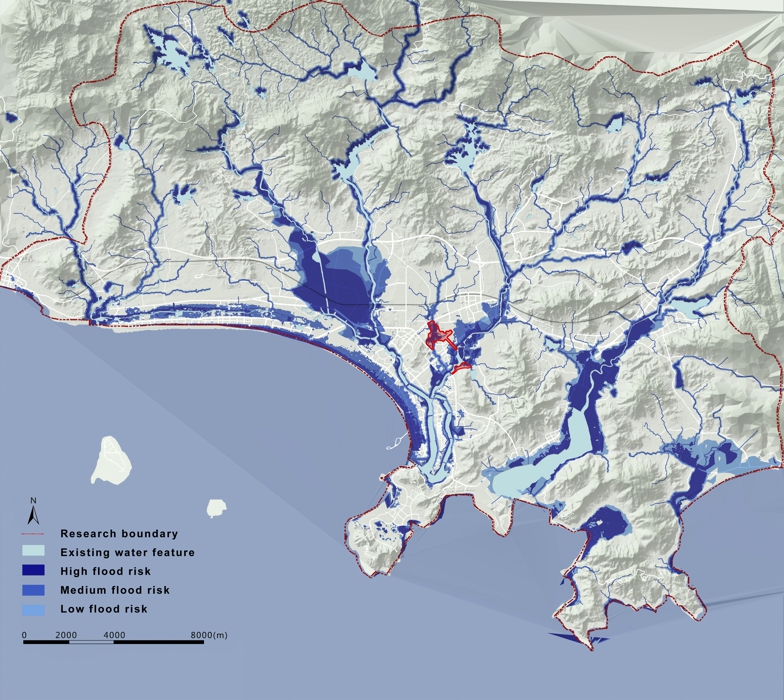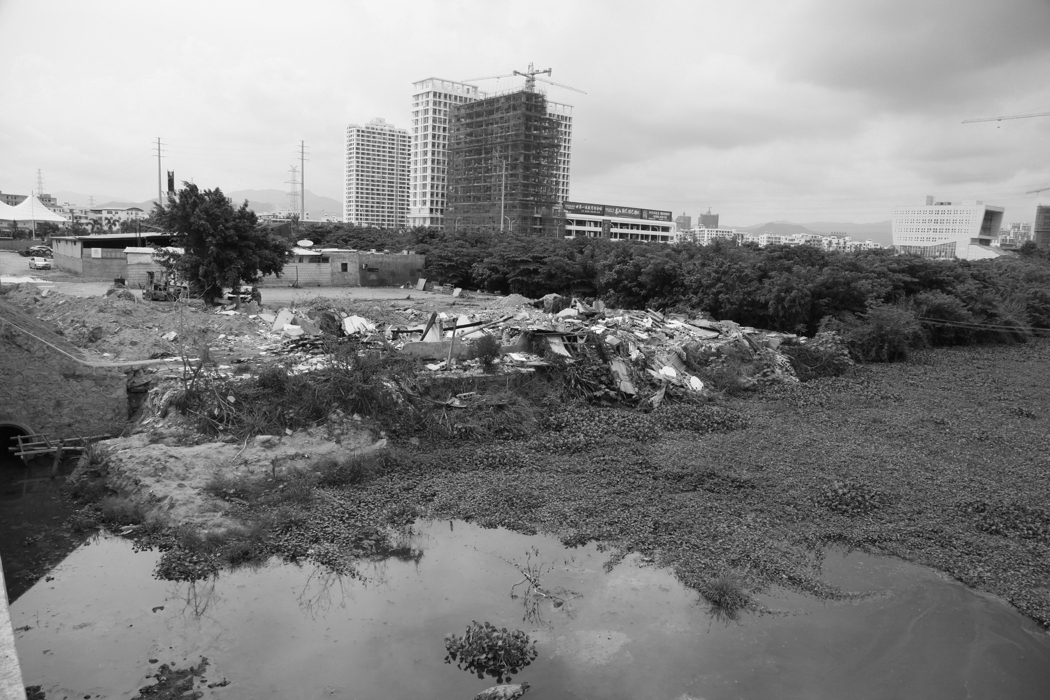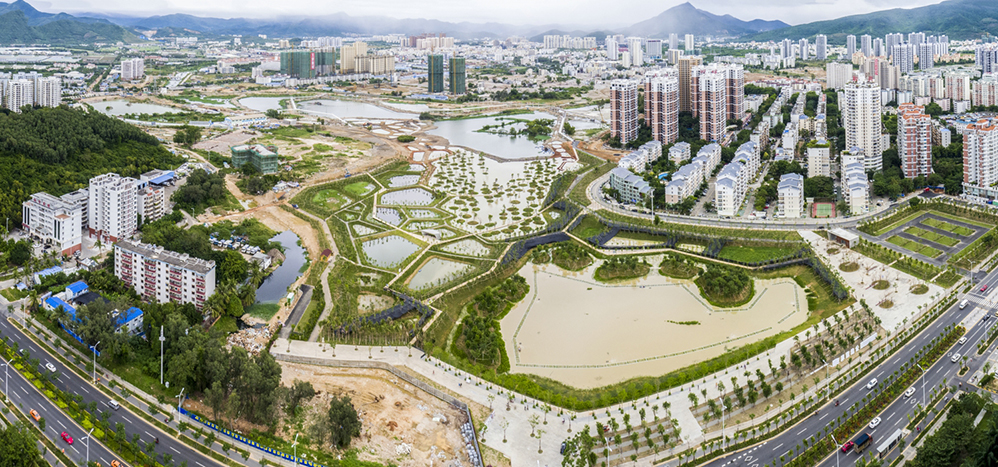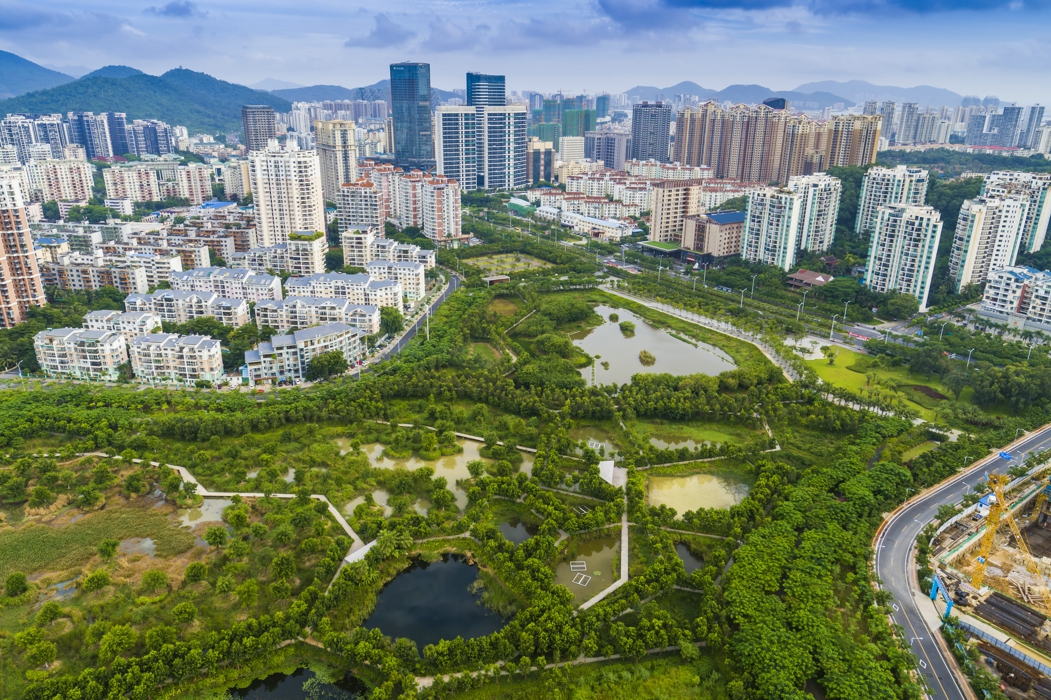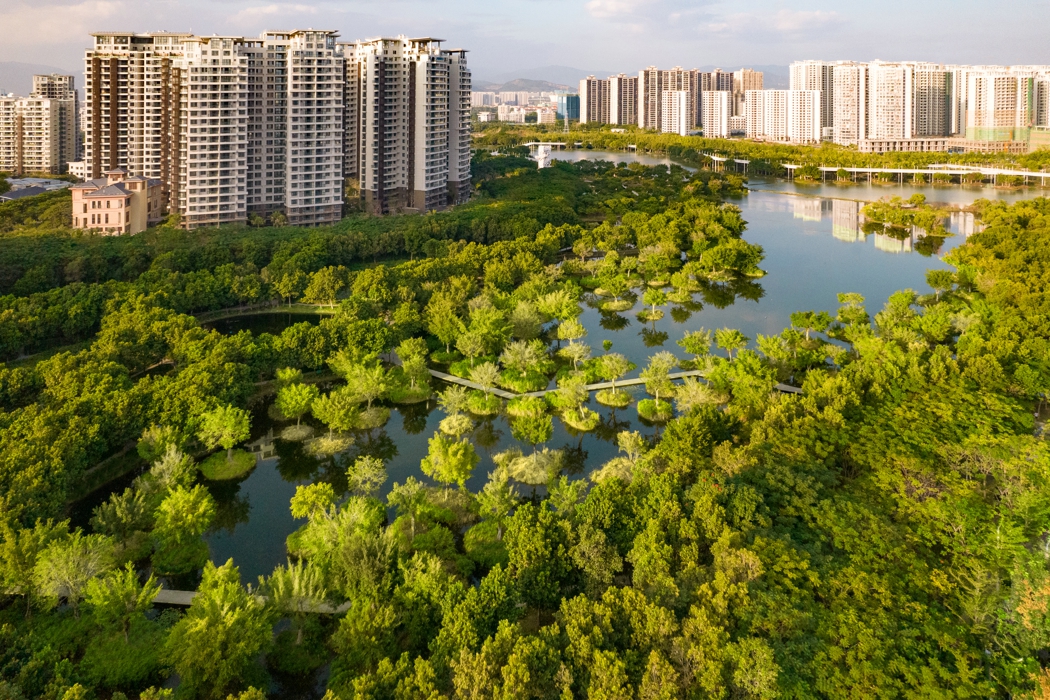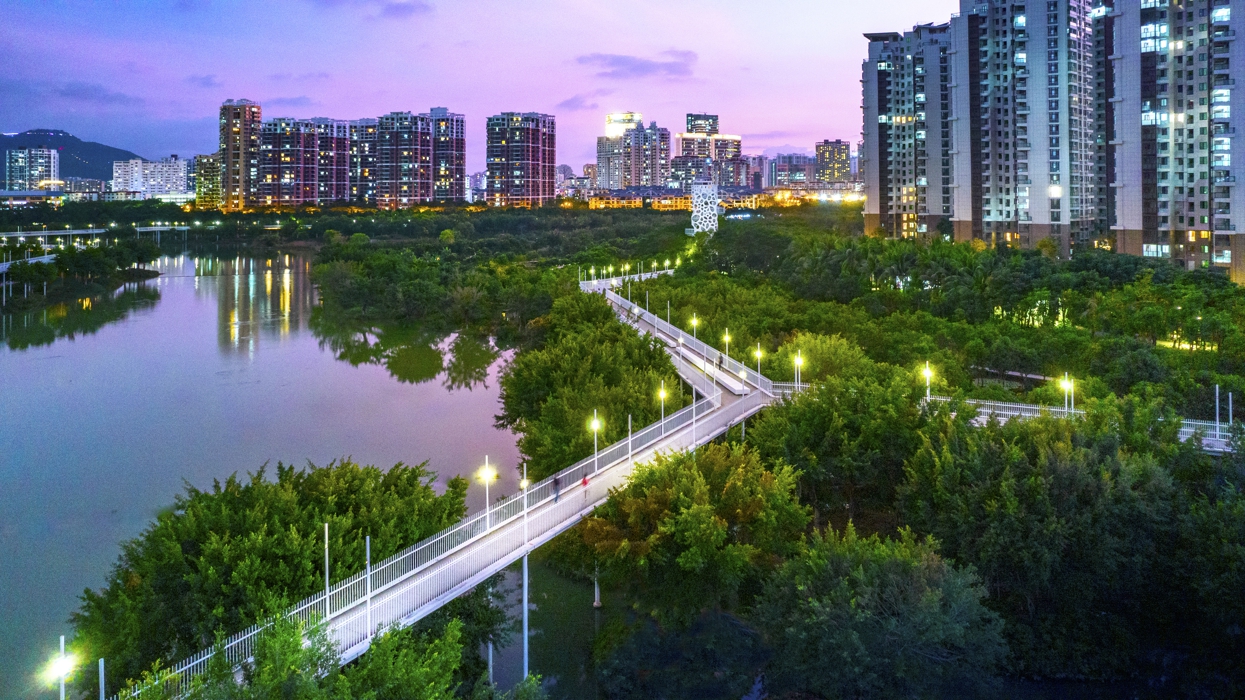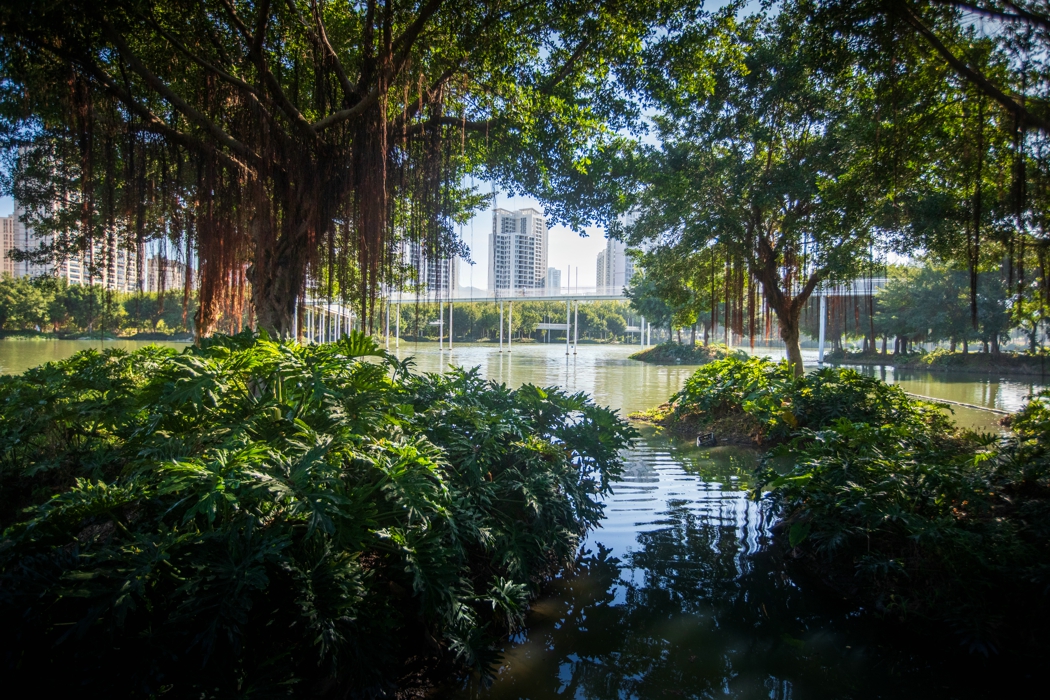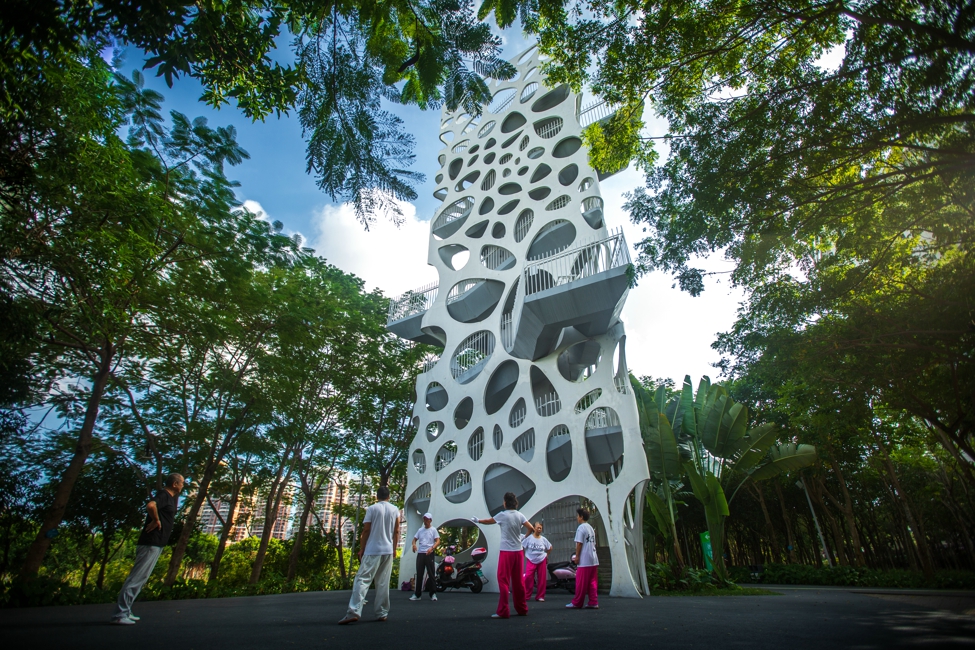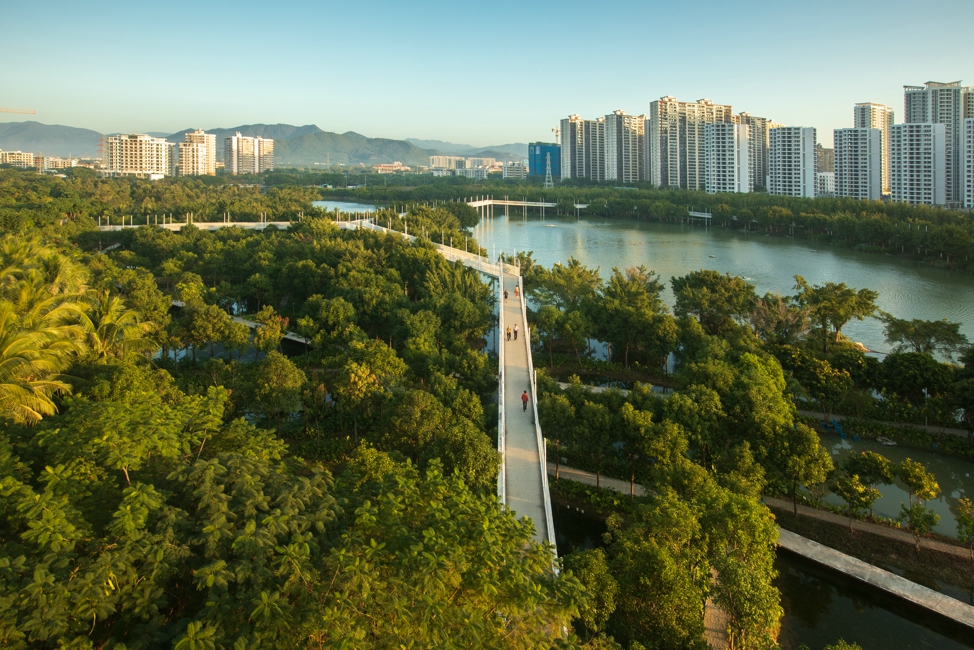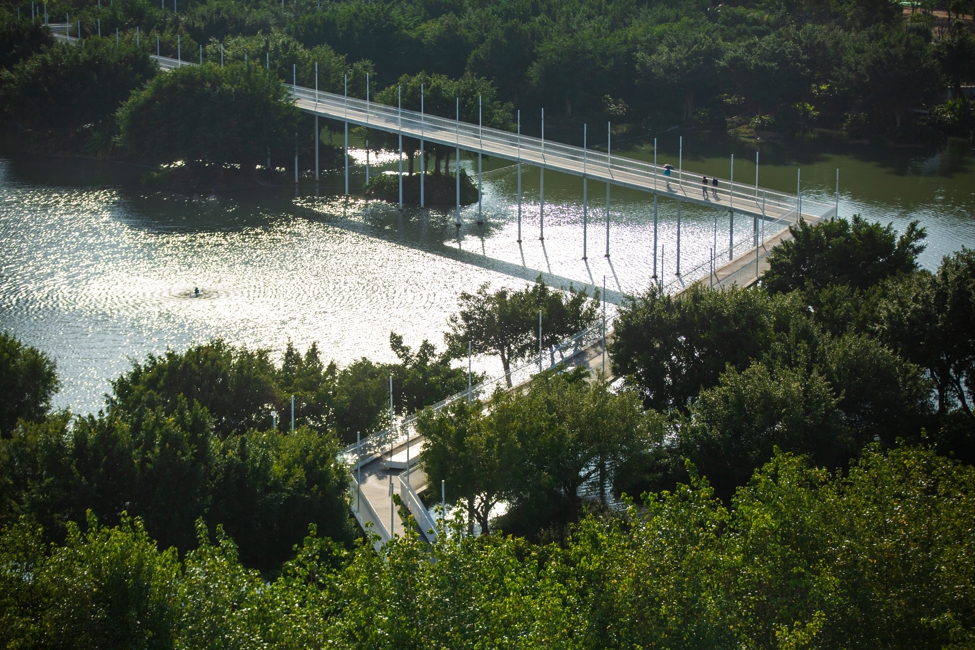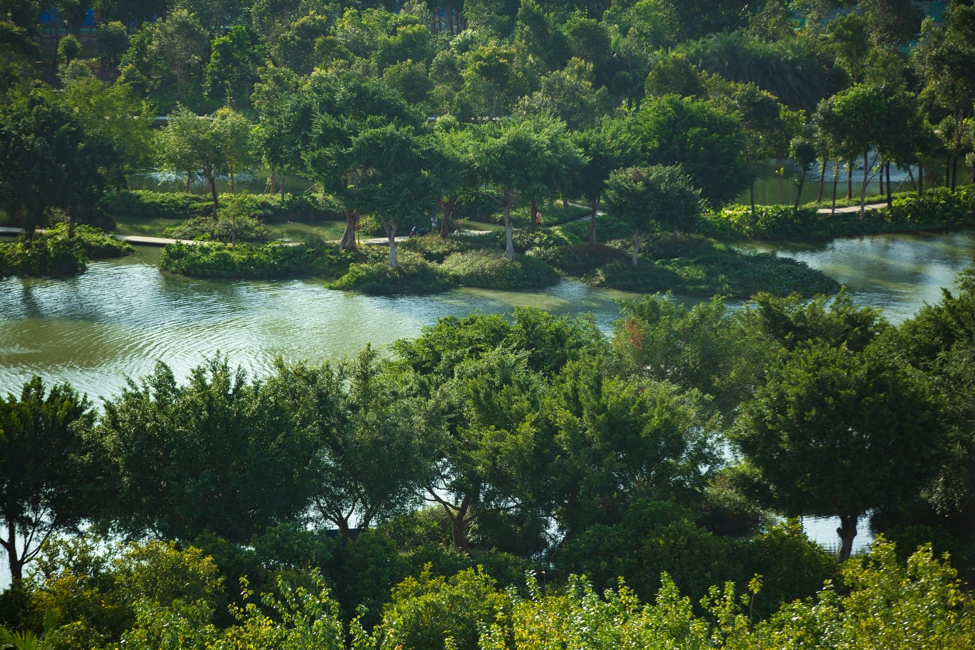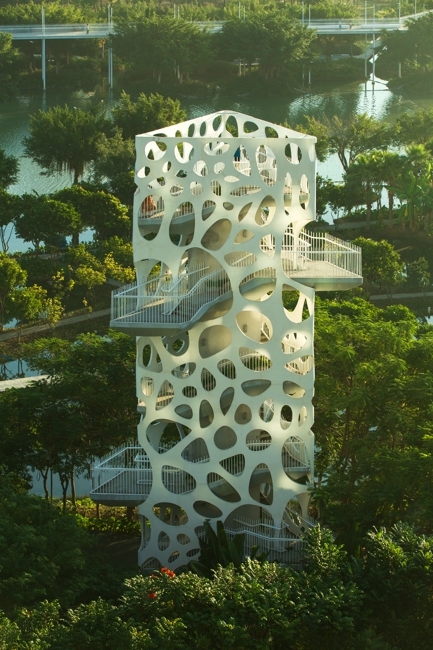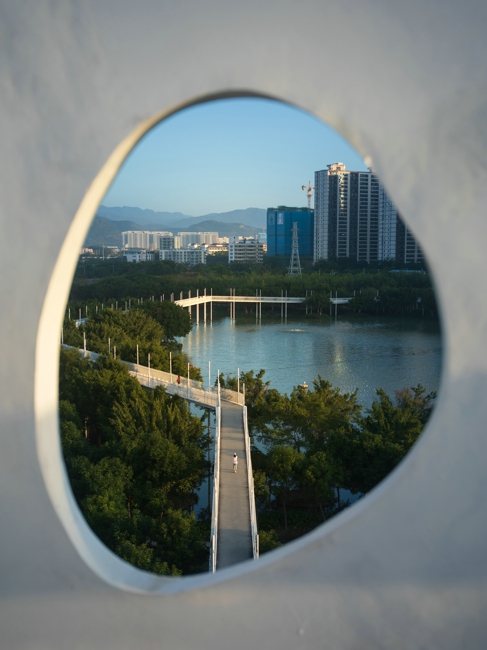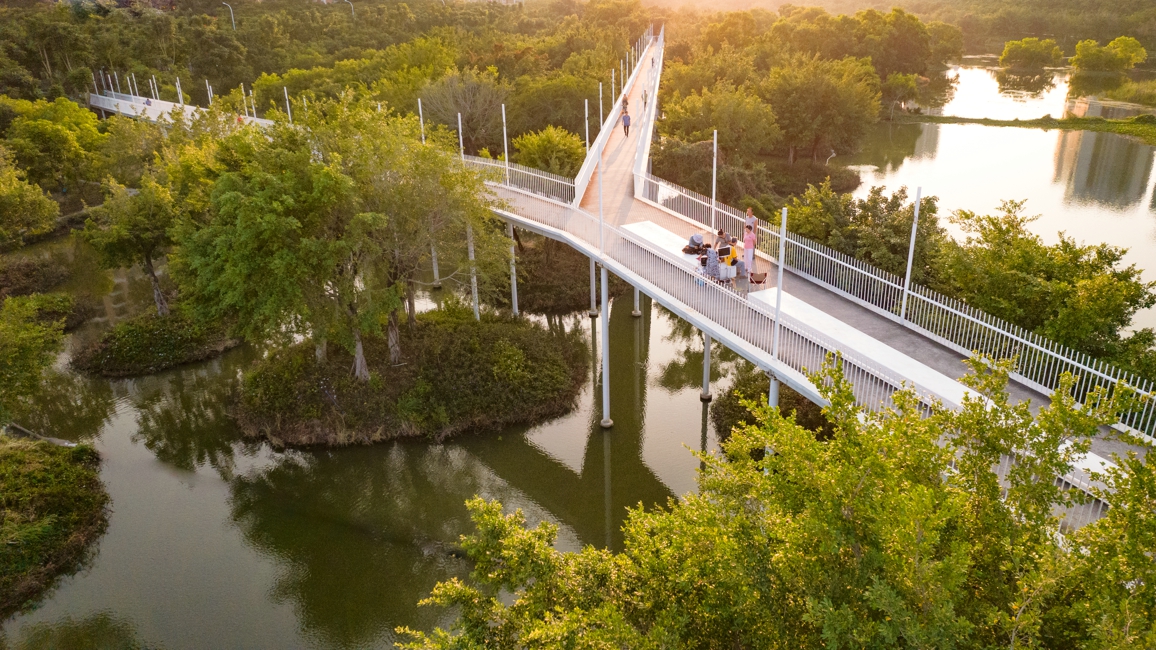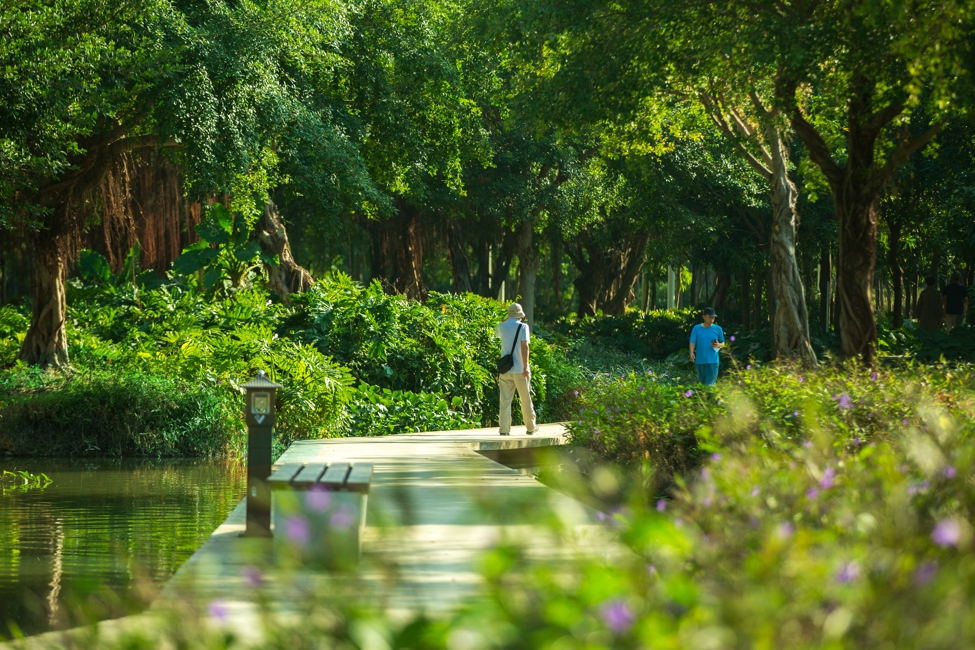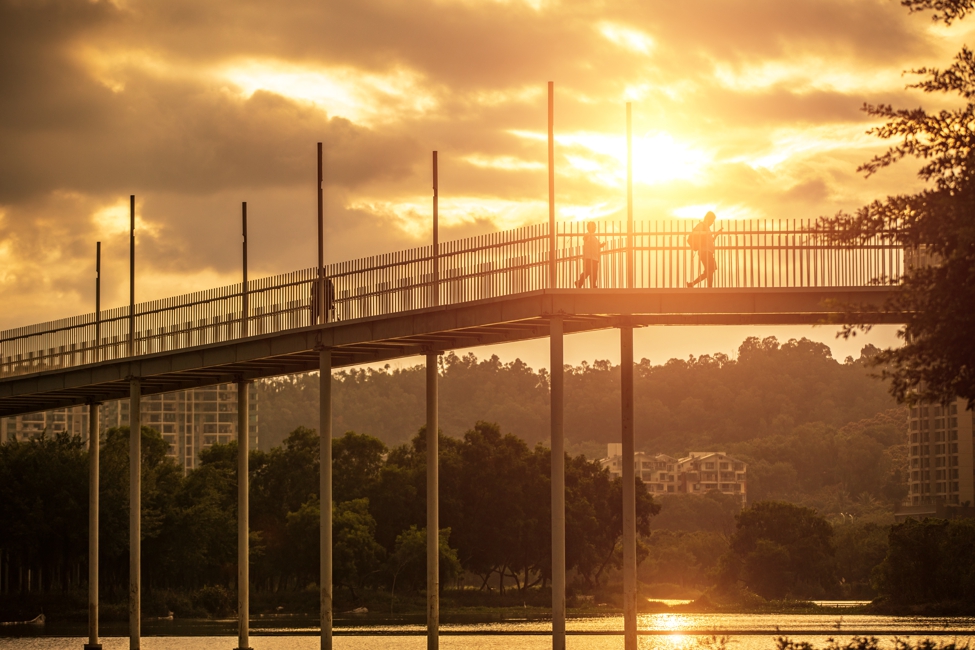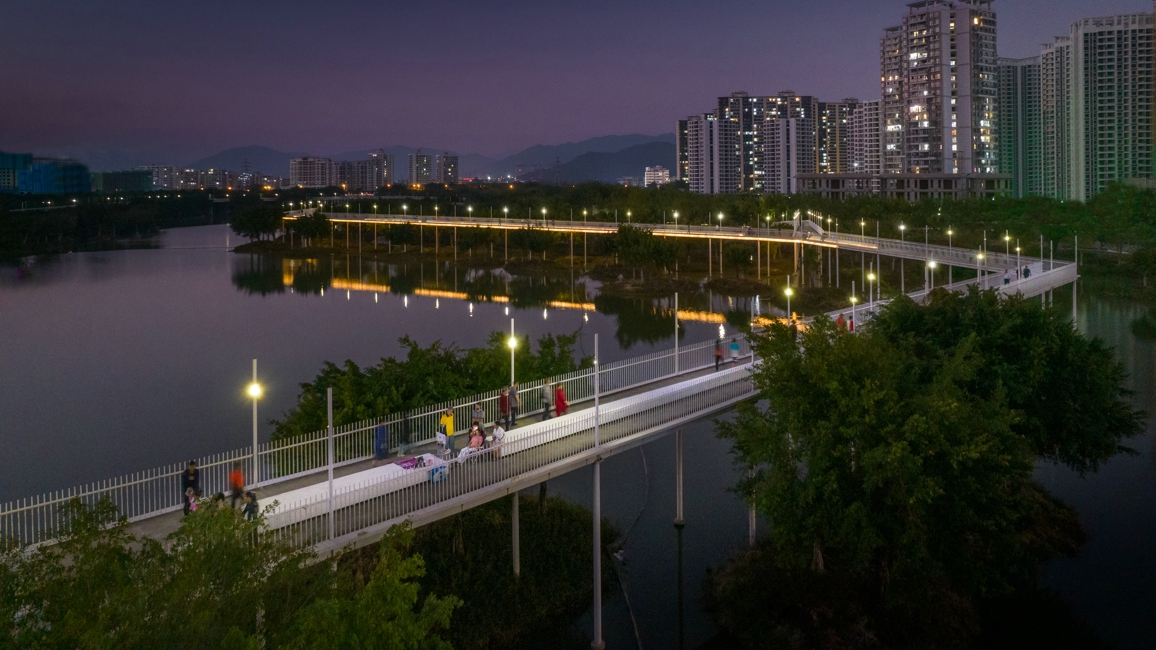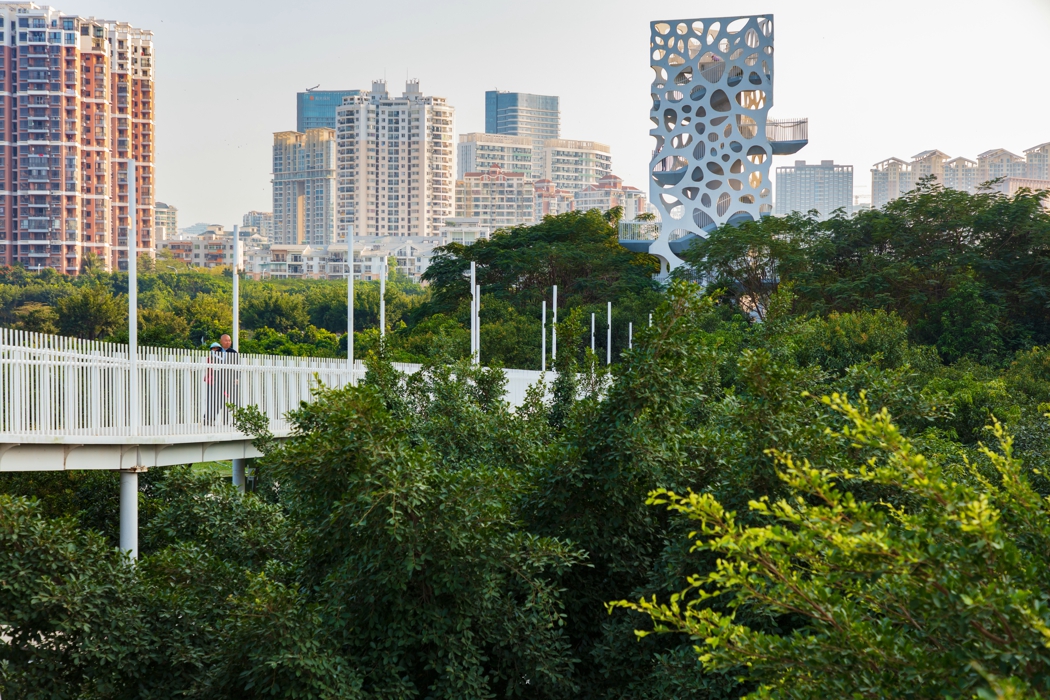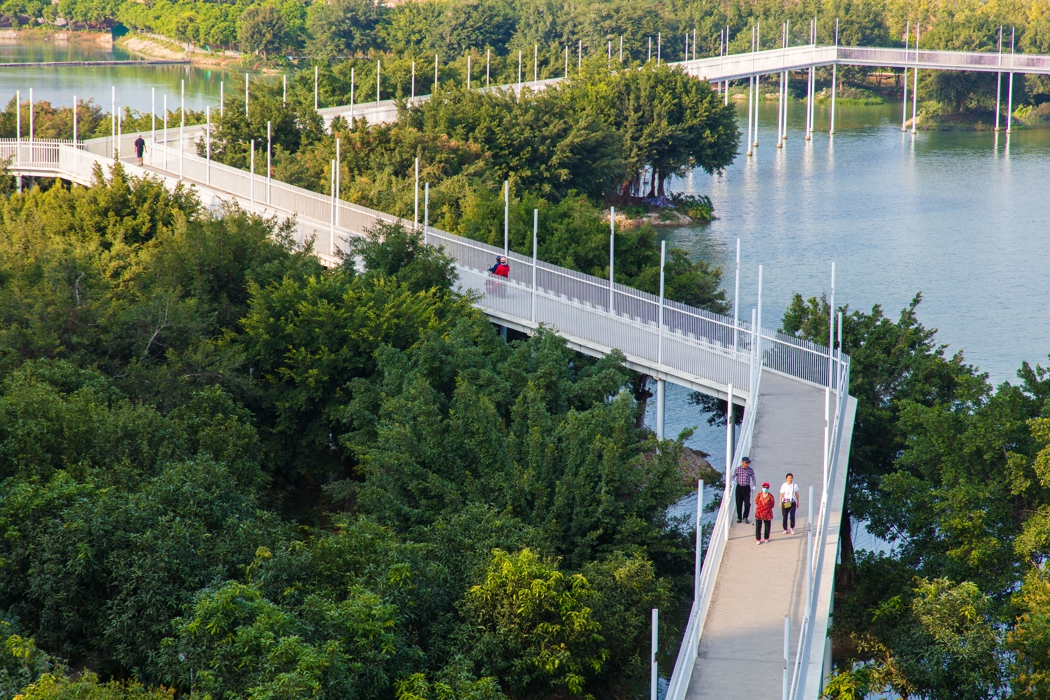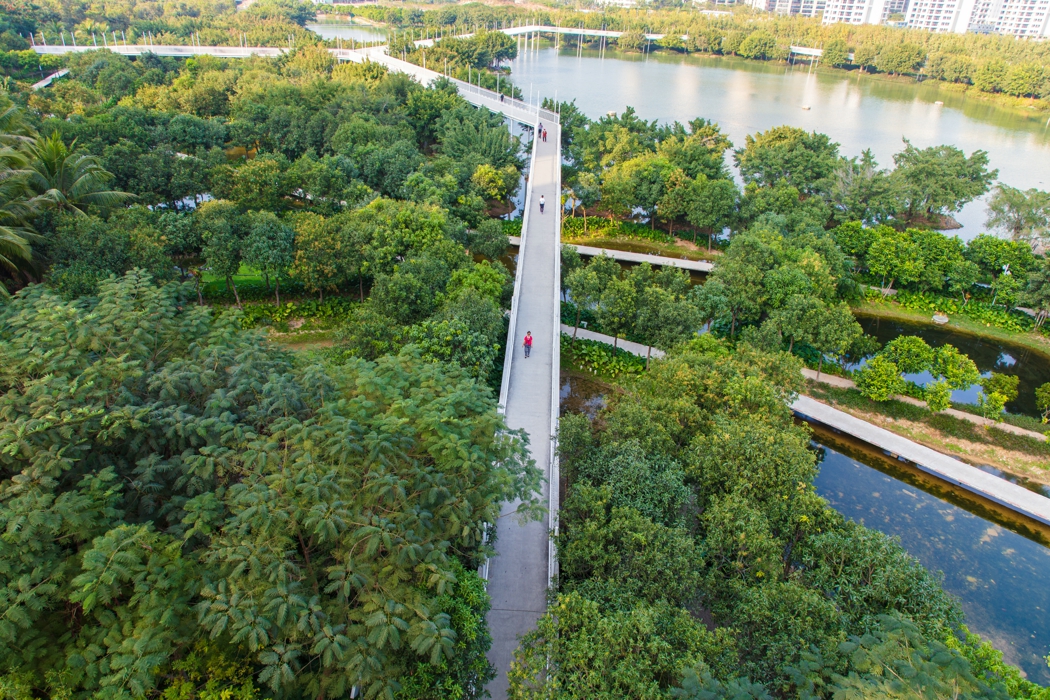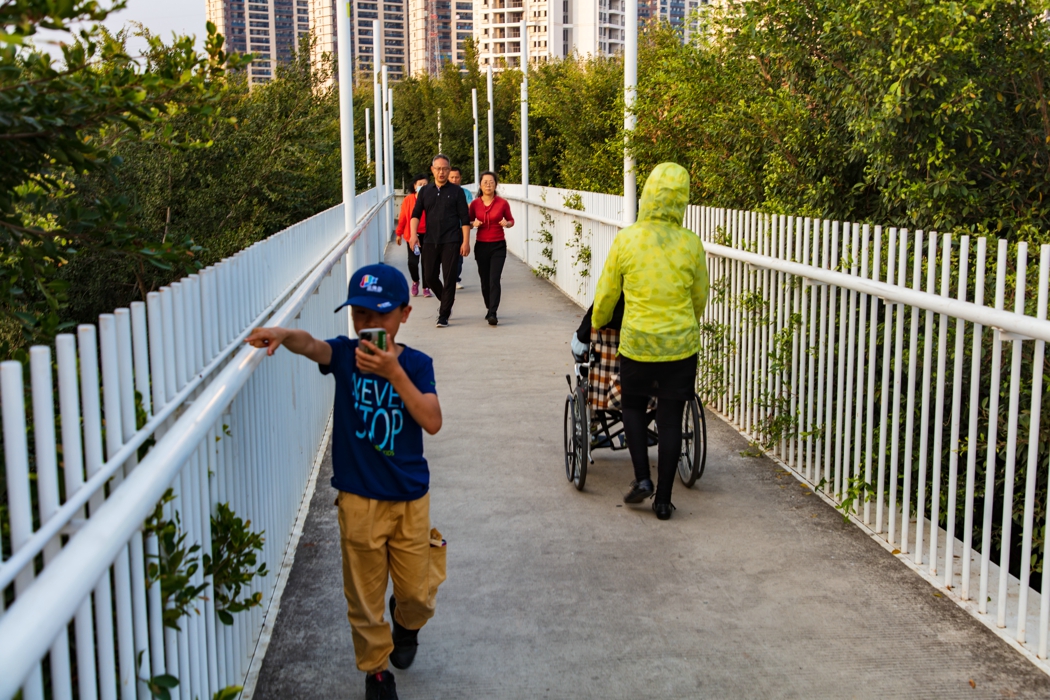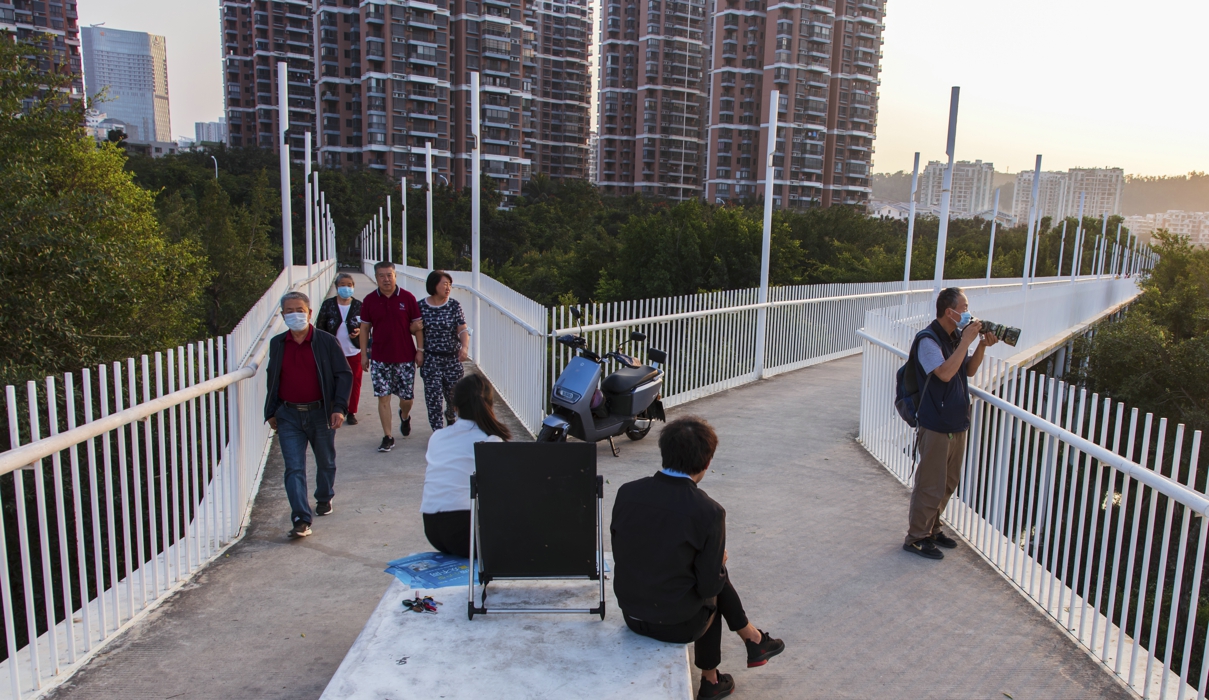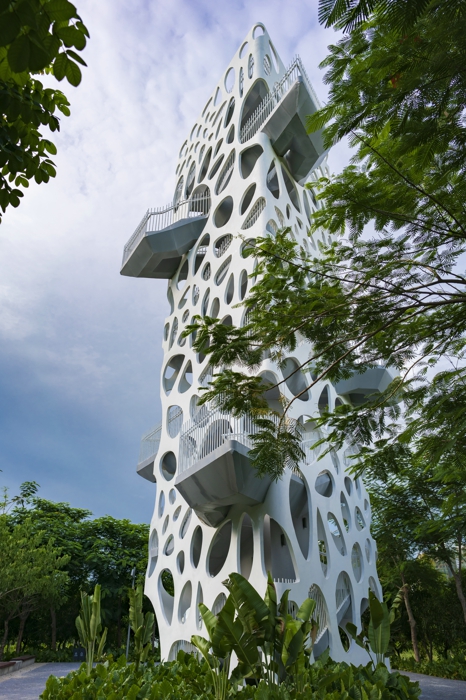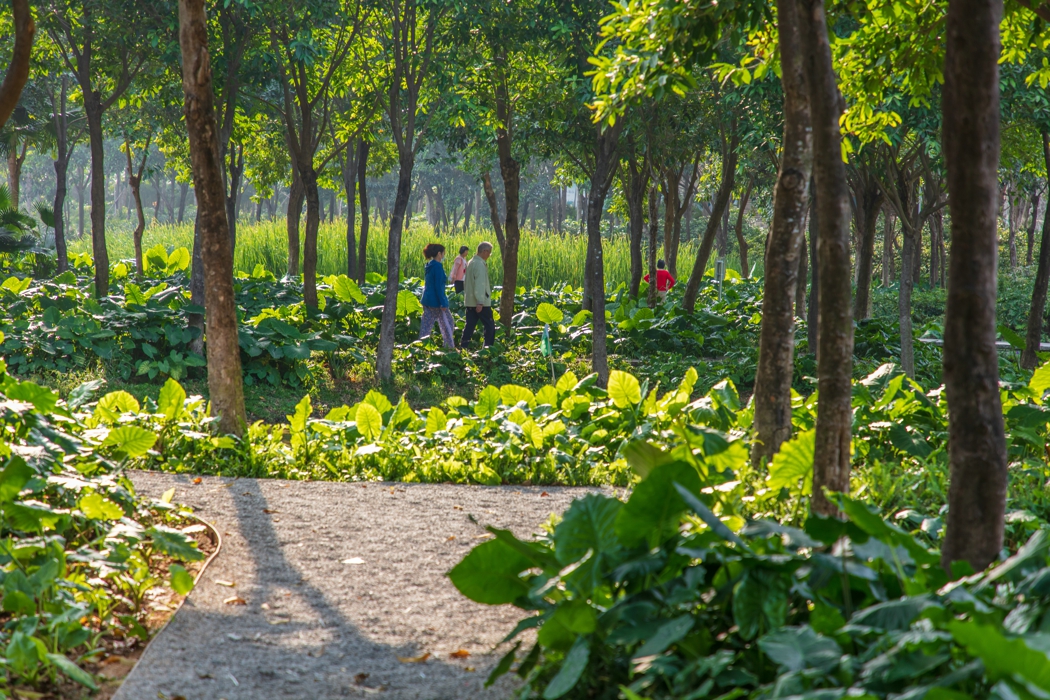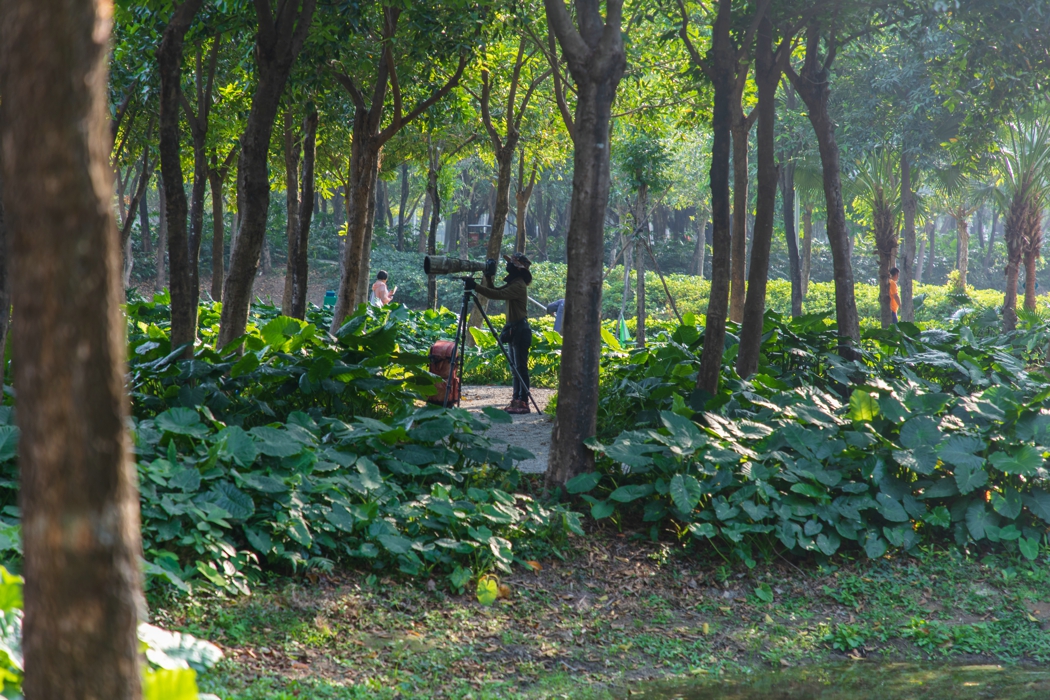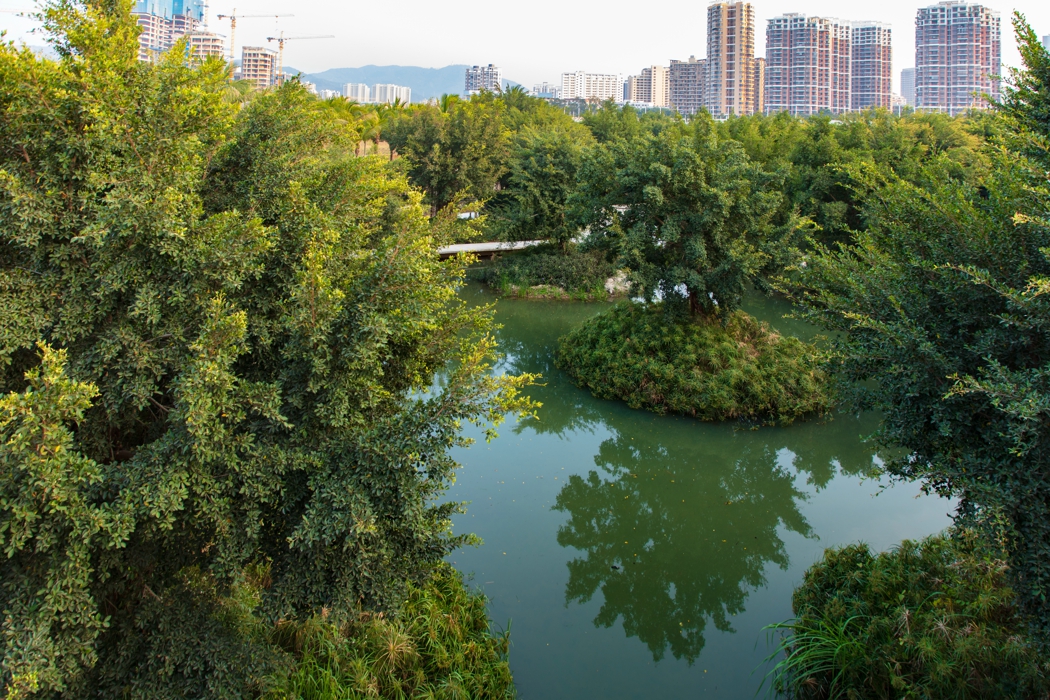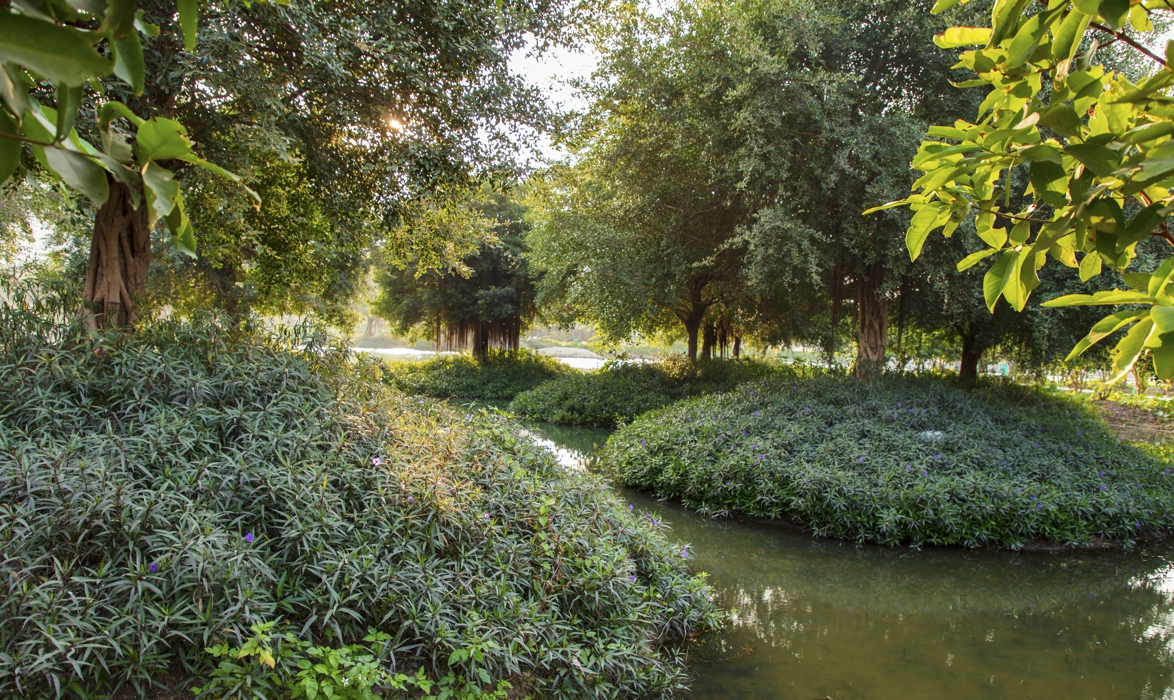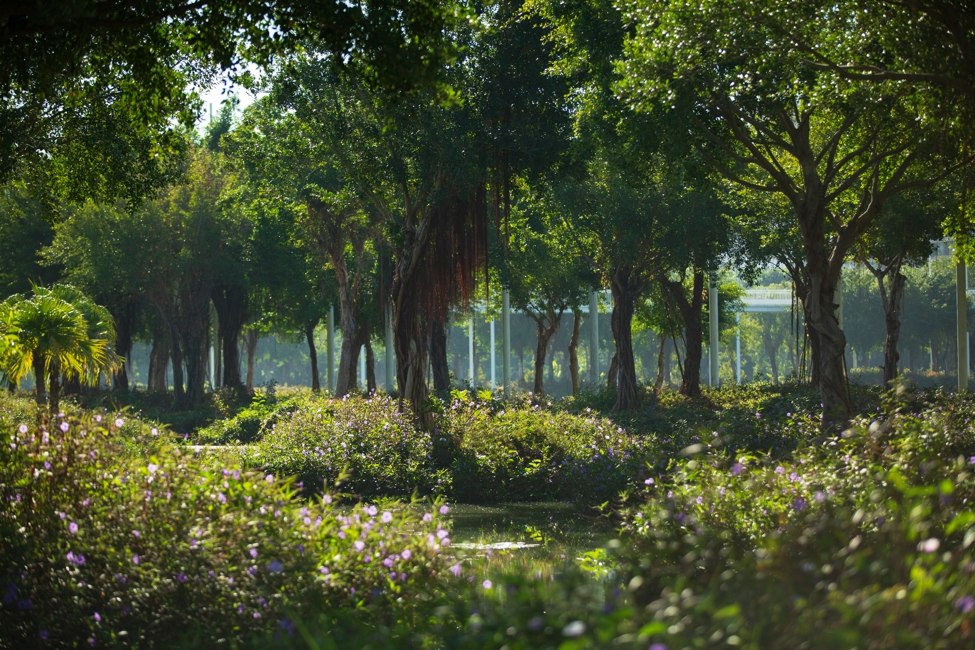Sanya Dong'an Wetland Park
Project Information
- Project Location:
- China Sanya, Hainan
- Project Scale:
- 66.77 Hectares
- Design Time:
- August 2015
- Build Time:
- June 2016
- Client:
- Sanya Landscape Sanitation Management Bureau
- Award List:
- 2025 The International Architecture Awards
- Related Papers
Project Profile
A Modern Sponge City Inspired by Ancient Wisdom: Sanya Dong’an Wetland Park
1. Project statement
Under the influence of a monsoon climate and global climate change, the city of Sanya, on southern China’s Hainan Island, suffered severe flooding and urban inundation. Together with other water-related problems such as pollution and habitat loss, this made the city a key proving ground for China’s sponge city campaign, launched in 2014. Dong’an Wetland Park has become one of the most significant demonstration and multi-functional projects of the nationwide sponge city effort. Inspired by the ancient wisdom of farming, the project was built quickly, at low cost and in a manner replicable at large scale.
2. Objective and Challenge
Three decades of ruthless development left Sanya a mess of destruction in terms of landscape. Almost all the waterways in the developed districts were polluted and choked with garbage. Concrete flood walls had been built to reclaim land for development, but they killed the mangroves, wiped out riparian habitat, and blocked tides from the sea and storm water from the higher ground, which resulted in frequent urban inundation. The city lost water resilience. Meanwhile, a growing population, including seasonal tourists and migrants, began voicing their desires for a more livable city.
In 2015, the municipal government and the Chinese Ministry of Housing and Urban and Rural Construction decided to make dramatic changes, and turned to landscape architect for help. A series of demonstration projects was designed and executed, including the restoration and construction of sponge-like wetlands in the city to remediate storm water, and to transform greenspace along major roads to be better-adapted to the monsoon climate. Among many executed projects, Dong’an Wetland Park is the largest demonstration project and has played a key role in transforming Sanya into a climate-resilient city.
The site of the park is 68 hectares (168 acres) in size. It was a wetland on a river corridor that had been filled with urban debris. The water was polluted and the wetland was degraded and overgrown with invasive water hyacinth (Eichhornia crassipes), which caused severe urban inundation in the surrounding communities, and resulted in foul odors and constant flooding that led to frequent complaints from residents.
The challenges were obvious and significant, and the problem had many facets, including ecological, social and cultural. The scale of landscape transformation required was large, the timeline was short and the budget was limited, yet the practices demonstrated in this project needed to be widely replicable.
3. Design Strategy
Three strategies were used to transform the site:
3.1 “Ecopuncture” based on a systematic hydrologic analysis
Envisioning Dong’an Wetland Park as an integral part of the green infrastructure of a water-resilient city, the park was carefully planned after a systematic hydrological analysis of the entire metropolitan region. The plan calls for more space for water, and for removing the concrete flood walls that had channelized and reduced the resiliency of rivers, replacing that hard infrastructure with eco-friendly embankments. It also integrates wetlands, ponds, rice paddies, greenways, parks and coastal habitats into a holistic sponge system to retain, cleanse water and recharge the aquifer. This green infrastructure also integrates interconnected pedestrian and bicycle paths for people to use.
3.2 Simple and inexpensive solutions inspired by ancient wisdom
Inspired by the ancient farm-building techniques of cut-and-fill used in the Pearl River Delta area in China, the landscape architect employed three types of earthwork approaches to quickly transform the site into a water-resilient green sponge, without hauling earth to or away from the site, and using just a single piece of earth-moving equipment as efficiently as possible.
At the periphery of the park, the pond-and-dyke system was designed to retain and cleanse urban runoff from the surrounding communities. Each pond is different in terms of depth and plant community, and functions as a water-remediation experiment that produces data for further refinement of the techniques used here.
At the northeast edge of the park, where the elevation drop is significant, terraces are created to stabilize the slope of the edge and catch the storm water runoff from upstream urban areas.
In the center of the park, an island system was designed to create a lake scattered with islands. On each island, a banyan tree was planted; its dense root system will remove excess nutrients in the water, and the trees will eventually create a forest over the lake and cool off the lake.
3.3 Multiply and integrate the space to amplify eco-services
Sited in the center of the city and being large in size, Dong’an Wetland Park is intended to be an urban green infrastructure with multiple functions: remediating storm water, creating urban habitats for native species, and providing recreational public space for local residents and an aesthetically pleasant attraction for tourists and locals alike.
At the periphery of the park, a porous landscape composed of dykes and ponds of different depths creates a diversity of habitats that retain and clean water and nourish rich biodiversity, including native birds, fishes and amphibians. A network of pedestrian paths is designed along the matrix of dykes under the growing tree canopy, creating an immersive and intimate experience of a cool oasis right in the heart of this tropical city.
In the center of the park, the design has created three superimposed layers of landscape: at the bottom, the wetland and lake, which function as a sponge to retain and cleanse storm water; in the middle, the vegetation and banyan forest on the lake’s islands, which become refuges for birds and other wild animals; and at the top, the skywalks over the tree canopy, which connect the surrounding communities and provide pleasant recreational spaces and views of the city.
4. Conclusion
As a demonstration project of the sponge city concept, Dong’an Wetland Park has proven to be a great success. The majority of the park was built on a very compressed timeline of less than one year, and at a comparatively low cost (about one third of a normal city park in the region). The eco-services the park provides are significant in that it not only solved the water-associated problems of the surrounding communities, including urban inundation and contaminated surface runoff, but it also become a great refuge for native biodiversity that attracts bird watchers and photographers. It is ranked as one of the most popular parks by residents and attracts thousands of visitors every day. It has been a catalyst for urban redevelopment, and the property value increased 300% in just two years after the project was built. The park has become an official demonstration site for the national sponge city program and is featured in the mayor’s text book as exemplar case, and it has drawn hundreds of mayors on visits organized by the Chinese Ministry of Housing and Rural Development.
